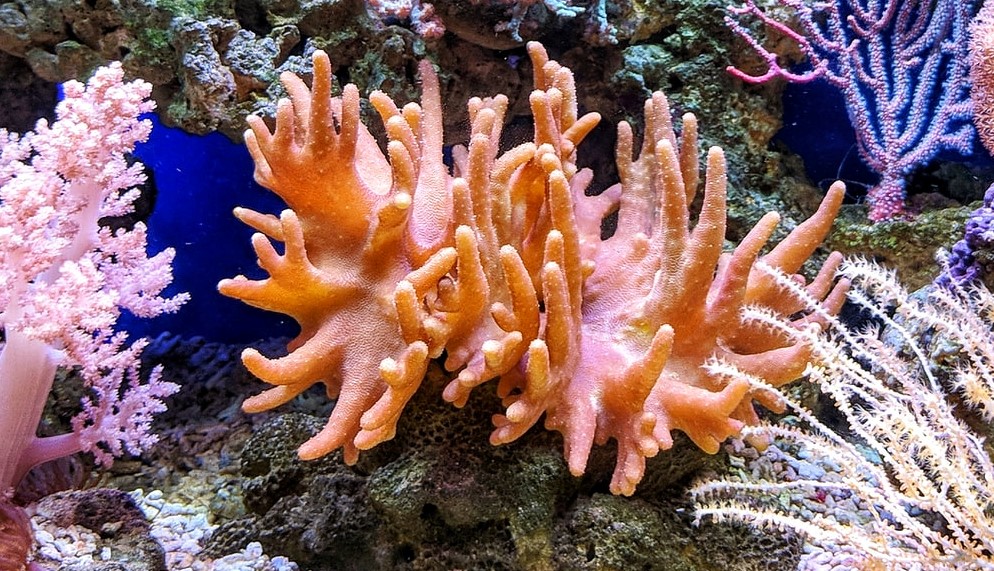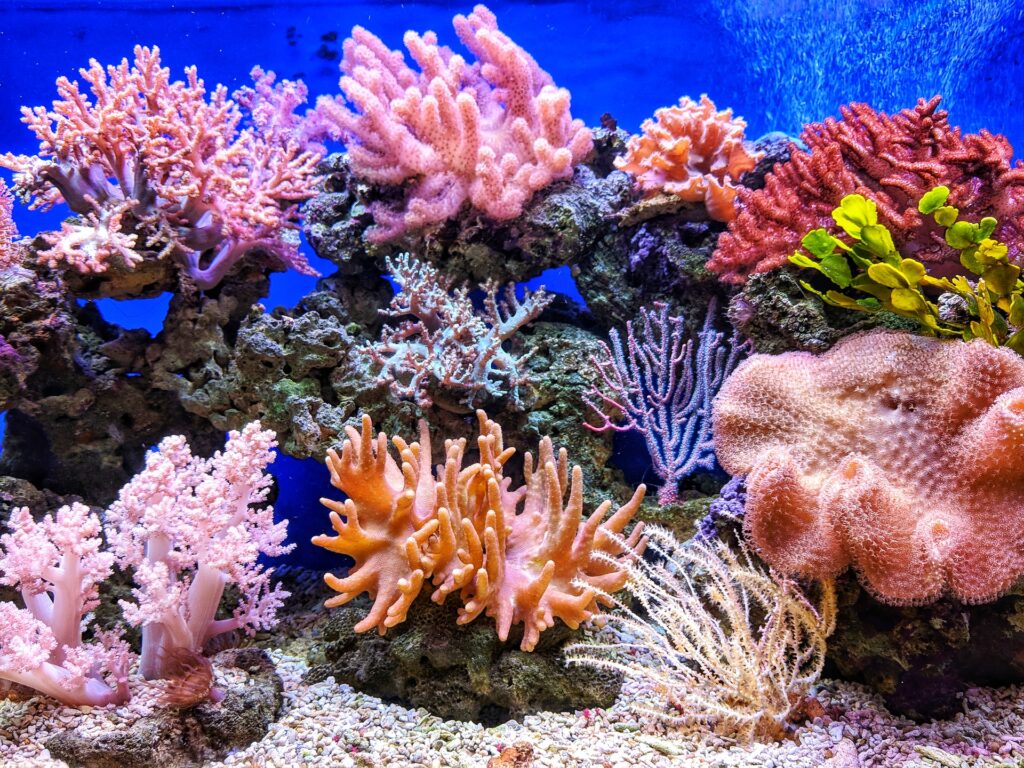
The Lobophytum (Lobophytum sp.) is a species of soft coral which are also known as Devil’s Hand Leather Coral or Finger Leathers. These corals are popular in saltwater aquariums due to their ease of care and unique appearance.
These corals get their name from their appearance. It looks like a creepy looking hand reaching out of the sand. The fingers have polyps sticking out of them, and they can have different colors.
These are very hardy, and they can tolerate mild swings in water parameters. This makes them great for beginners.
The other types of leather corals that are popular in reef tanks are Sinularia Leather corals (Finger Leather) and Sarcophyton aka Toadstool Leather Corals.
Table of Contents
Devil’s Hand Leather Coral Placement

Devil’s Hand leather corals can be placed almost anywhere in your tank. They can tolerate a wide range of light intensity, so you can place them higher on your live rocks if needed. They will need moderate to high flow though. These are the best areas of placement to ensure a healthy and thriving coral.
Make sure you put them in an area with a lot of flow because they do shed, and this will help them get rid of their old skin. Medium and high areas of the tank seem to do best for these corals. Another consideration to make when placing these is their toxicity. Leather corals do have a self-defense mechanism when other corals get close to them. Stony corals seem to be the most sensitive to this.
You will also need to put them in an area where they can grow and expand over time. You will need to remember that these corals use chemical warfare if they feel threatened by other corals near them. So, keep that in mind when planning your aquascape.
Devil’s Hand Coral Care
These corals are easy to care for, and they can tolerate mild swings in water parameters. These are not hard to keep like SPS corals, etc. If it is unhappy, it will retract its polyps and shrink up. Once it becomes happy again, it will spread its polyps out again.
If you are new to keeping corals these are a great species to start with. They are more difficult to kill, which is good if you are learning how to keep corals. These are very forgiving corals and tough.
- Care Level: Easy
- Lighting: Moderate to High
- Flow: Medium to Strong
- Temperature: 72-78 Fahrenheit
- dKH: 8-12
- pH: 8.1-8.4
- sg: 1.023-1.025
Water Flow
Devil’s Hand leather corals like strong flow. You should make sure that it has plenty of water movement. They do best in high circulation as long as it is not directly in front of a power head. Strong flow helps them shed their skin, and it will blow it off.
The higher water circulation keeps algae and detritus from sticking to them. Leather corals also seem to grow faster and bigger under higher flow and lighting.
Lighting
Lobophytum require moderate to high lighting. Any reef lights will do well with leathers. You can use LED’s, T5, metal halide, etc. as long as you can reach a PAR of 100-250. A 14-20k color spectrum works great for Devil’s Hand corals. These are not picky when it comes to lighting. This is another reason that these are great for beginners.
It is also a great coral if you don’t have the best lighting for your tank yet. If your lights are not strong, you will just need to place the coral closer to the surface for more light.
These corals are very hardy, you may need to move your frag around until you find the best spot for it.
Feeding
It is not necessary to feed Lobophytum leather corals because they get most of their food from your lights. This comes from the symbiotic relationship that they have with zooxanthellae. So, photosynthesis is their main source of energy. They will grow and thrive just fine only on your reef lights.
They are filter feeders, so you can feed them phytoplankton. This is not necessary, but it may improve the overall health of your leather. I occasionally feed my leather corals with PhytoGreen-M by Brightwell Aquatics. You can purchase it from Amazon here. It contains a liquid phytoplankton blend plus some amino acids. There are other brands as well, but I have not used them so I can’t comment on them.
Devil’s Hand Coral Shedding
Devil’s Hand corals can shed their outer skin like other leathers. It is totally normal and can occur at anytime. When it is shedding, its polyps will retract and it will get a glossy film over it. This film will slowly peel away, and the coral will start showing its polyps after it is done. The reason they shed their skin is to remove any algae or detritus that has built up on it. It is basically cleaning itself.
The shedding process can take one or two days to complete. This depends on the size of your coral and how much flow it has.
This is one of the good reasons to give leather corals high flow. It helps to blow off the film. You can also use a turkey baster to manually remove it. Sometimes, mine gets pieces that seem to cling for a couple of days. I just use a baster and blast it off. I will also use it to suck up floating pieces to discard them.
Toxicity
Are devil’s hand corals toxic? Yes, leather corals will release chemicals in the water when they feel other corals are getting too close. This is not a big issue because they do not have sweeper tentacles that will sting from far away. The chemical is a toxin, but it is not overly harmful to other corals. Just make sure you don’t put a leather right next to a SPS colony and you will be fine.
Some reef tanks are even successful with leather corals bunched up to others without issue.
The best way to deal with leather toxins is to run granular activated carbon in your tank. This will adsorb and toxins. I have multiple types of leather corals in my aquarium including devil’s hand. I have had no issues at all with anything in my tank dying or getting sick due to leathers.
